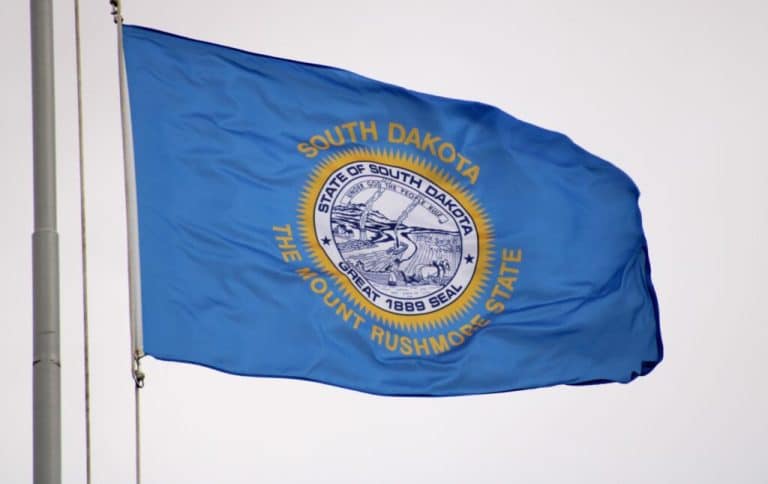SIOUX FALLS, SD – South Dakota businesses in the midst of a vigorous post-pandemic economic recovery are scrambling to attract new employees from what has become a limited pool of potential workers.
The vast number of open positions and reduced available workforce are the latest wrinkles in the state economy caused by the COVID-19 pandemic and have led to a number of unexpected outcomes.

Some experts say the labor shortage could ultimately lead to better pay and benefits for South Dakota workers, who on average make some of the lowest wages in the nation.
Meanwhile, one development official said the imbalance could hold back long-term growth and economic expansion in the state and prevent South Dakota from fully engaging in the post-pandemic recovery.
“It’s hindering South Dakota’s growth,” said Tom Johnson, director of Elevate Rapid City, a regional economic-development agency.
Throughout the state, businesses cannot expand if they can’t find workers to fill open positions or if industries related to construction or development are unable to build new homes or businesses in a timely manner.
”It affects rural areas and suburban areas; this is an issue across the spectrum,” Johnson said. “You cannot find any company not struggling to find folks at this point.”
Employers are offering sign-on incentives, wage increases and additional benefits to attract hesitant employees. Many working people, especially in the bustling tourism and food service industries, are working overtime and risking burnout to keep up with the demand. And most customers — from those seeking car repairs or home improvements to those just trying to get a quick meal — are experiencing longer wait times for goods and services.
The need for workers is so high, the state is targeting eligible students, people who are in retirement and people who travel the country living in recreational vehicles to join the workforce, said South Dakota Department of Labor Secretary Marcia Hultman.
Hultman said efforts are specifically focused on funnelling workers into the seasonal employment and tourism sectors, industries that already see an increased need each spring. Those sectors are experiencing exceptional growth this year as out-of-state visitors flock to the state as worries over the coronavirus have ebbed.
Hultman suspects the shortage will lead to increased wages across all sectors. Anecdotally, she’s seen local businesses offer increases, but the state won’t have new wage data for the next few months.
Hultman said the labor shortage is a challenge, but a welcome one. “It’s the best challenge to have; I would rather have this than to be facing what we were facing a year ago,” she said.
Economic experts say there is not a single, all-encompassing reason for the labor shortage.
Some employees who left the workforce because of the pandemic have been hesitant to get back into in-person employment. And, though experts say it’s a small fraction of the unemployed, some unemployed people are clinging to the extra federal benefits tacked on to state unemployment payments.
There are also social and cultural aspects to the shortage. The pandemic was a time of reflection for many workers. Some are shifting careers, leaving current jobs or going back to school. Many either chose to or were forced to lead a different lifestyle, such as staying at home to care for family members.
A lack of housing or affordable childcare can limit some communities from accepting new workers or prevent some people from returning to work.
“A lot of those features are coming together to create a situation where, clearly in the state and nation, we just don’t see the kind of reattachment to the labor force that we expect to see,” said South Dakota State University economics professor Joe Santos.
As of June 15, more than 24,000 jobs were listed on the state’s largest job database, SD WORKS. For the entire month of May, more than 41,000 jobs were listed, compared to under 30,000 positions posted in May 2020. Nationally, a historic record high of 9.3 million jobs were available in early June.
Some South Dakota employers and politicians have pointed to the extra federal unemployment benefits provided during the pandemic as a major factor in the worker shortage, but Hultman said that is far from the primary cause.
Labor department data show that fewer than 1,500 people in South Dakota are receiving the extra unemployment benefits.
“Many people think once those federal benefits end, it will solve the issue,” Hultman said. “It’s not going to solve the issue. It’s not the sole contributing factor. The numbers don’t support it.”
Hart2Hart, Inc. owner Jordan Hartshorn said the company’s 17 McDonald’s stores across South Dakota, Minnesota and Iowa had to shift gears to keep and attract workers. They raised their starting wage from $13 to $15. They started offering more benefits and emphasized opportunities for growth.
“If they feel they aren’t making a sufficient amount of money, they’re going to work for your competitor across the street,” Hartshorn said.
Hartshorn said the company also tried unconventional methods of recruitment, targeting students and young people through an ad on TikTok.
Mike Scott, executive director for the Winner Area Chamber of Commerce and Economic Development, said a lack of available housing, especially in smaller communities, is another barrier to finding workers.
“It always comes back to housing as a recruitment tool, and the lack thereof makes it difficult at times,” he said. “You put the cart before the horse or the horse before the cart. You’ve got to decide which one is the horse and which is the cart.”
The leisure and hospitality industry is seeing a great need for workers, but the labor shortage is affecting almost all industries.
“There are a lot of businesses in the tourism sector where people are just working their tails off, 12 hours a day, seven days a week,” said South Dakota Department of Tourism Secretary James Hagen.
Hagen said he has seen indicators that employers may be increasing wages in the tourism industry, long among the lowest-paid industries in the state.
While tourism and seasonal employment needs are highest in the state, the worker shortage is also present in general construction, manufacturing and production, said Crystal Litton, a staffing specialist at People Ready, a temporary staffing firm in Sioux Falls.
“We have a lot of jobs that need workers now and we’re just having a hard time and struggling with getting workers out in the field,” she said. “This is the hardest time I’ve had to fill the jobs.”
Litton said some job-seekers are waiting to go back to work until the additional federal unemployment benefits provided during the pandemic expire. South Dakota is halting those extra benefits on June 26, and 23 other states plan to stop the program by July 3.
Howard Nold, owner of Nold Excavating in Rapid City, said he is behind schedule because he can’t find skilled or unskilled workers in his field. Fewer people are responding to help wanted advertisements, and those who do often don’t show up for an interview, he said.
Nold, 68, has reached out to other contractors in the area to see if they would be willing to share any available workers, but he has always been turned down because other employers are also in need of workers.
“I’m getting too old to be in the trenches doing the work, but right now I don’t have a choice.”
The shortage may be a more long-range problem in rural areas of South Dakota. Heather Petersen, the finance officer for Mission, S.D., said the city has had some jobs open for more than a year. A need for housing and the town’s remote location, roughly 100 miles from the nearest Walmart, create employee recruitment challenges.













